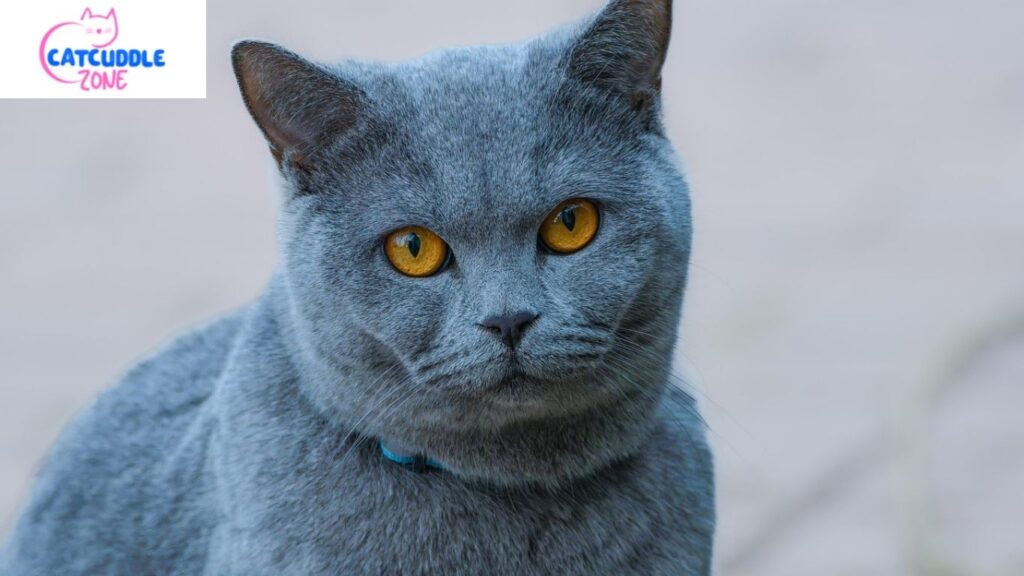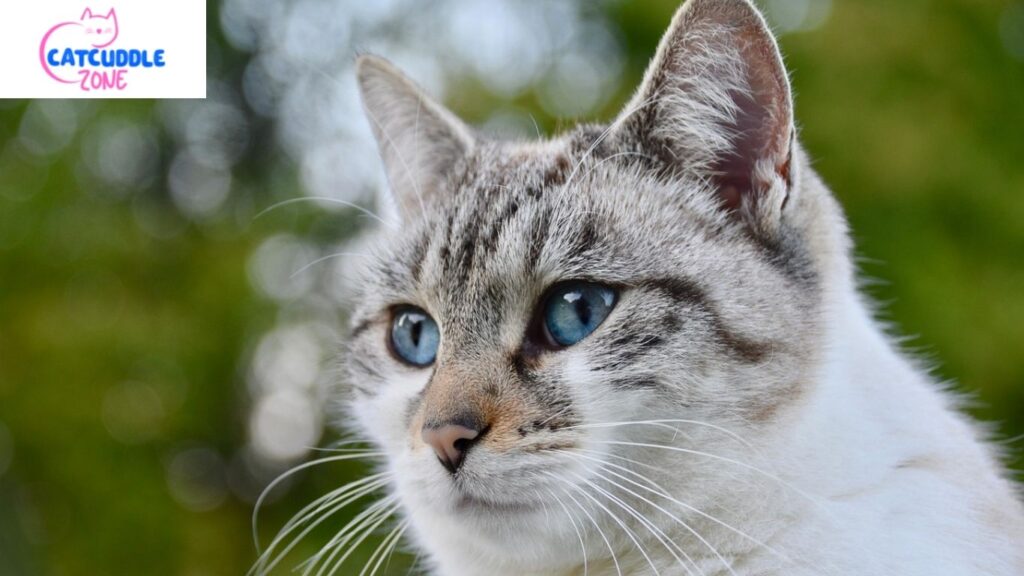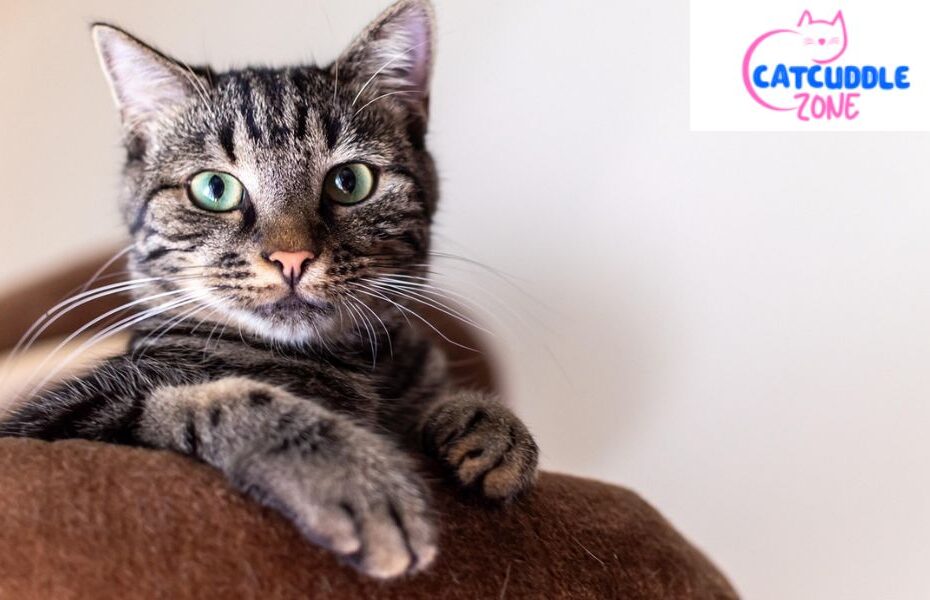Is your cat’s eye watering and you’re not sure why? This can be a common issue in cats and may look harmless at first. But sometimes, it can be a sign of a deeper problem. Cats may develop eye discharge in cats from things like dust, allergies, or even infections.
While a little tear can be normal, too much tearing, also called epiphora, might mean there’s something wrong. It can be caused by conditions such as cat conjunctivitis causes or a cat tear duct disorder. Sometimes, it’s related to a feline upper respiratory infection (URI). A watery eye in your cat may be caused by different factors, knowing which one can help you keep your cat safe and sound.
Is It Normal for Cats to Have Watery Eyes?
A little moisture of tears in cats is normal. They have lacrimal glands (tear-producing glands) which produce tears to ensure that the eyes are kept clean. However, when the tears overflow and dampen the fur or stain it, or when the corners of the eyes are crusty, this could indicate epiphora (excessive tearing). This often means the tears are not draining properly through the tear ducts / nasolacrimal system.
Some cats have a genetic issue with tear drainage. It is typical of brachycephalic breeds (Persian, Himalayan), since their flat faces cause tears to difficulty pass through the appropriate ducts. These things may be normal for these cats, but if you notice eye discharge in cats or cat eye irritation, then you should have a vet examine it.
What Is Eye Discharge in Cats?
The discharge that comes out of the eyes of the cats may vary in color and consistency. Clear discharge may be normal, especially when one wakes up but thick, yellow, green, or bloody drainage may indicate infection or trauma. Normal tears help the eye to remain wet however when the eye is irritated or when it is combating something, discharge accumulates.
When there is gunk, crust or mucus, your cat may have conjunctivitis, an allergy or an infection, such as feline herpesvirus (FHV-1) or feline calicivirus. If the discharge smells bad, or if your cat keeps blinking or pawing at the eye, it’s time to visit the vet.
Common Causes of Watery Eyes in Cats
There are many causes of tearing in cats. Some are mild, while others can be serious. The table below shows common causes and what they might mean:
| Cause | What It Means |
| Conjunctivitis | Inflammation of the pink tissue around the eye |
| Feline herpesvirus (FHV-1) | Viral infection with eye and nose symptoms |
| Cat upper respiratory infection | Often from viruses like FHV-1 or feline calicivirus |
| Cat tear duct disorder | Blocked nasolacrimal duct blockage causes overflow |
| Foreign body in eye | Something stuck in the eye causes irritation |
| Cat eye injury | Scratch or trauma to the eye |
| Corneal ulcer in cats | Open sore on the eye, very painful |
| Feline allergies eyes | Reaction to dust, smoke, or food |
These problems often lead to cat ocular inflammation, squinting, or eye rubbing. If untreated, they can cause worse damage, like glaucoma or even vision loss.
Why Does My Cat Have Only One Watery Eye?
If only one eye is watering, your cat might have a cat foreign object eye, like a bit of dust or a hair. Sometimes a minor scratch or local infection affects just one eye. This still needs treatment, even if it looks small. Cats can’t tell us they’re in pain, so it’s better to be safe.
A single watery eye can also happen from a cat tear duct disorder on one side. If the nasolacrimal duct blockage is only on one side, it causes that eye to overflow. The vet may flush the duct or check for injury.
Symptoms to Watch Alongside Watery Eyes
Watery eyes alone may not be serious. But if you see other cat watery eye symptoms, it’s time to act. Check whether the eyelids are red or swollen, whether the pupils get bigger or smaller, or whether he or she is blinking more than usual. Your cat might shy away light, hide or cease eating.
Additional symptoms are sneezing, coughing, or runny nose. These are indicative of a feline Upper respiratory infection (URI). When your cat is rubbing its face or there is green or yellow gunk in the eyes this condition might be worsening.

When Should I Worry About My Cat’s Watery Eyes?
You should worry if your cat’s eyes have been watering for more than 48 hours or if the discharge changes color. Pain, squinting, swelling, or behavior changes also mean something is wrong. Don’t wait too long, because some conditions like corneal ulcer or glaucoma can get worse fast.
If your cat is a brachycephalic breed (Persian, Himalayan) and has always had tear stains, that might be normal. But if it’s a new symptom, it’s not normal anymore. Always check with your vet for new eye problems and know the cat facts.
How Vets Diagnose the Cause of Watery Eyes

Vets will begin with a full eye exam. They may use special tools or lights to look deep into the eye. One of the common tests is Schirmer tear test that involves the examination of the amount of tear your cat produces. A low tear level may indicate dry eye ( Keratoconjunctivitis sicca ).
Vets apply a fluorescein stain test to examine the eye surface damage. This dye shows scratches, ulcers, or a cat eye injury. If there’s pressure in the eye, they’ll test it using intraocular pressure measurement to check for glaucoma. They may also take samples using cytology / biopsy if they suspect deeper problems.
Treatment Options for Watery Eyes in Cats
Treatment depends on the cause. For infections, vets may give antibiotic/antifungal/anti-inflammatory eye drops. These are applied directly to the eye and may need to be used several times a day. If there’s a virus, oral medications (antibiotics, pain relievers) may help reduce pain or swelling.
Some mild problems can be managed at home with supportive care (warm compress, hydration, humidity). A warm, damp cloth can clean discharge safely. Never use human eye drops. Always use eye drops for cats that your vet recommends. In serious cases like uveitis or cat eye infection, quick care can save your cat’s vision.
How to Prevent Eye Problems in Cats
To help stop future issues, keep your cat’s living space clean. Vacuum often and avoid cigarette smoke, dust, and strong cleaners. If your cat has allergies, talk to your vet about ways to manage feline allergies eyes. Good air quality and clean water matter too.
Take your cat for regular checkups. Your vet may do a quick cat veterinarian diagnosis to catch eye problems early. Avoid touching your cat’s eyes. If your cat has a flat face, gently clean under the eyes to prevent cat eye irritation from stains. If you can’t visit a vet easily, try online veterinary consultation to get advice.
Conclusion
If you’ve been wondering, “What should I do if my cat’s eyes are watering?”, the answer is to stay alert and act early. A little bit of teariness is to be expected but do get in touch with your vet if you can see color or smell or any other symptoms. The health of our eyes is very important, and the earlier you cure an issue, the more successful it will be.
Cats can’t tell us what’s wrong, but their eyes can. With a bit of knowledge on the causes, symptoms to watch out and proper treatments, you will be able to keep your feline friend happy and healthy. Keep in mind that in most cases eye discharge in cats can be easily treated provided that it is detected at the early stages. So stay informed, stay observant, and keep those eyes sparkling!
Frequently Asked Questions
Why is only one of my cat’s eyes watering?
It could be dust, a scratch, or even a blocked tear duct — common but worth watching closely.
How do you fix a leaky cat’s eye?
Use vet-approved eye drops or a warm compress, but always check with your vet first to avoid serious issues.
Should I take my cat to the vet for a watery eye?
Yes, if it lasts more than a day, looks red, or has colored discharge — eyes are too delicate to risk.
What does it mean if one eye keeps watering?
It may be a chronic tear duct issue, conjunctivitis, or allergy — your vet can pinpoint the cause safely.
